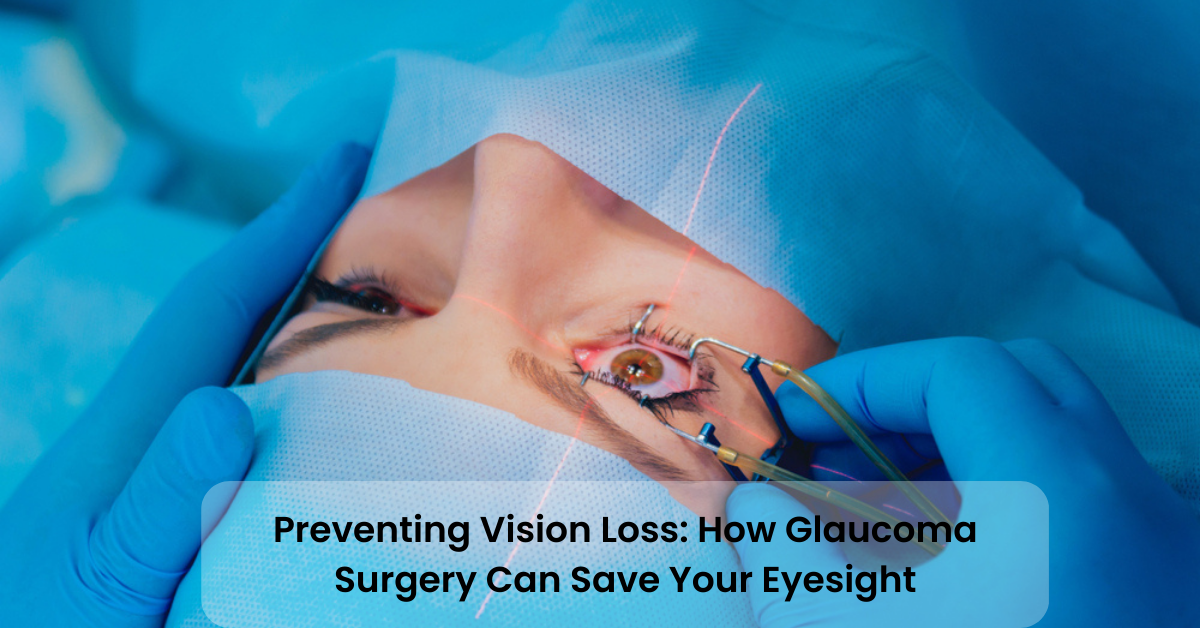Preventing Vision Loss: How Glaucoma Surgery Can Save Your Eyesight
If untreated, glaucoma is a dangerous eye condition that can cause vision loss. Understanding glaucoma and its impact on vision is crucial for early detection and effective treatment. In this article, we will explore different types of glaucoma, their treatment options, and the importance of early diagnosis. We will also delve into glaucoma surgery as a treatment option, including types and procedures for both closed-angle and open-angle glaucoma. Additionally, we will discuss recovery and post-operative care after glaucoma surgery, alternative treatment options, and the proactive steps you can take to prevent vision loss through glaucoma surgery.
Understanding Glaucoma and Its Impact on Vision
A series of eye conditions known as glaucoma harm the optic nerve, which connects the eye to the brain. This damage is often caused by increased pressure inside the eye, known as intraocular pressure. The optic nerve is responsible for transmitting visual information from the eye to the brain, and any damage to this nerve can lead to vision loss.
Glaucoma comes in a variety of forms, such as open-angle, closed-angle, and normal-tension glaucoma. The most typical kind of glaucoma, open-angle glaucoma, gradually worsens over time. Closed-angle glaucoma, on the other hand, is a sudden and severe form of glaucoma that requires immediate medical attention. Normal-tension glaucoma occurs when the optic nerve is damaged despite normal intraocular pressure.
Introduction to Glaucoma Surgery as a Treatment Option
Glaucoma surgery is a viable treatment option for patients with advanced glaucoma or those who do not respond well to other forms of treatment. The goal of glaucoma surgery is to lower intraocular pressure and prevent further damage to the optic nerve. There are two main types of glaucoma surgery: closed-angle glaucoma surgery and open-angle glaucoma treatment.
Closed-angle glaucoma surgery is typically performed when there is a sudden increase in intraocular pressure due to a blockage in the drainage system of the eye. The most common procedure for closed-angle glaucoma is called laser peripheral iridotomy. In order to let fluid freely circulate and lower pressure, a small hole must be made in the iris during this surgery.
Open-angle glaucoma surgery, on the other hand, is performed when there is a gradual increase in intraocular pressure. The most common open-angle glaucoma surgery is trabeculectomy. This procedure involves creating a new drainage channel in the eye to improve fluid outflow and lower intraocular pressure.
Recovery and Post-Operative Care After Glaucoma Surgery
After glaucoma surgery, it is important to closely follow the post-operative care instructions provided by your doctor. This may include using prescribed eye drops, avoiding strenuous activities, and attending regular follow-up appointments. It is normal to experience some discomfort and blurred vision immediately after surgery, but these symptoms should improve over time.
During the recovery period, it is crucial to protect your eyes from injury and avoid rubbing or putting pressure on them. It is also important to adhere to any restrictions on activities, such as lifting heavy objects or swimming, as advised by your doctor. By following these guidelines, you can ensure proper healing and maximize the success of your glaucoma surgery.
Alternative Treatment Options for Glaucoma
While glaucoma surgery is an effective treatment option for many patients, it may not be suitable for everyone. In such cases, alternative treatment options are available. These include medications, such as eye drops or oral medications, to lower intraocular pressure. Additionally, laser therapy, such as selective laser trabeculoplasty, can help improve drainage in the eye.
Some patients may also benefit from minimally invasive glaucoma surgery (MIGS) procedures. These procedures involve the use of tiny devices or implants to improve fluid drainage and lower intraocular pressure. MIGS procedures are less invasive than traditional glaucoma surgery and typically have a shorter recovery time.
Conclusion: Taking Proactive Steps to Prevent Vision Loss Through Glaucoma Surgery
Glaucoma is a serious eye condition that can lead to vision loss if not properly managed. Early detection and diagnosis are key to preventing further damage to the optic nerve. Glaucoma surgery, whether for closed-angle or open-angle glaucoma, is an effective treatment option for many patients. By undergoing glaucoma surgery and following the recommended post-operative care, you can take proactive steps to prevent vision loss.
If you have been diagnosed with glaucoma or suspect you may have the condition, it is/8 important to consult with a glaucoma doctor. They can assess your specific situation and recommend the most appropriate treatment plan. Remember, your eyesight is precious, and by taking action, you can safeguard it for years to come. Book an appointment with a glaucoma doctor today and take control of your eye health.
Kindly check our other post also: Effective Acid Reflux Treatment: Say Goodbye to the Burn




Comments
Post a Comment